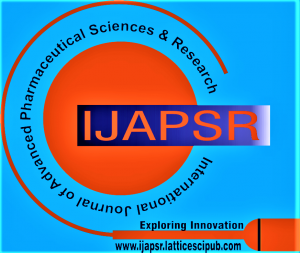A Review of Colon Cancer Treatment using Photoactive Nanoparticles
Nasser Thallaj1, Dania Hani ali Hamad2, Naseem Ahmad Batieh3, Gheed Ahmad Saker4
1Prof. Dr. Nasser Thallaj, Professor, Department of Pharmaceutical Chemistry and Drug Quality Control, Faculty of Pharmacy, Al-Rachid Privet University, Damascus, Syria.
2Dania Hani ali Hamad, Student, Department of Pharmaceutical Chemistry and Drug Quality Control, Al-Rachid Privet University, Damascus, Syria.
3Naseem Ahmad Batieh, Student, Department of Pharmaceutical Chemistry and Drug Quality Control, Al-Rachid Privet University, Damascus, Syria.
4Gheed Ahmad saker, Student, Department of Pharmaceutical Chemistry and Drug Quality Control, Al-Rachid Privet University, Damascus, Syria.
Manuscript received on 30 April 2023 | Revised Manuscript received on 12 May 2023 | Manuscript Accepted on 15 June 2023 | Manuscript published on 30 June 2023 | PP: 1-32 | Volume-3 Issue-4, June 2023 | Retrieval Number: 100.1/ijapsr.D4022063423 | DOI: 10.54105/ijapsr.D4022.063423
Open Access | Editorial and Publishing Policies | Cite | Zenodo | Indexing and Abstracting
© The Authors. Published by Lattice Science Publication (LSP). This is an open-access article under the CC-BY-NC-ND license (http://creativecommons.org/licenses/by-nc-nd/4.0/)
Abstract: This reviewed work on the development of photosensitive nanoparticles (NPs) based on a photodegradable poly(o-nitrobenzyl acrylate) core (PNBA, a hydrophobic and biocompatible polymer) and a dextran-derived shell (dextran is a biodegradable and water-soluble bacterial polysaccharide). First, methods for synthesizing PNBA-N3 were demonstrated by 1) single electron transfer radical polymerization (SET-LRP) of o-nitrobenzyl acrylates and then 2) introducing a single azide end functionalization. At the same time, the processes for the production of DexAlkyne-15 bearing several alkyne groups by the hydrophilicity of dextran were also addressed. Such as DexAlkyne-15 and PNBA-N3 can be reacted by CuAAC (Cu(I)-azide-alkyne cycloaddition catalyst) chemically resulting in Dex-g-PNBA glycopolymers with different molecular parameters. Second, strategies for producing NPs were demonstrated by comparing two processes that were characterized in terms of size, amount of dextran, coat thickness, and colloidal stability in NaCl or cell culture medium, or in the presence of a single potent surfactant. On the one hand, NPs made by nanodeposition of Dex-g-PNBA exhibit high PNBA weight fractions (>40%). On the other hand, the NPs were produced by evaporating the emulsion to the organic solvent using DexAlkyne-15 as a water-soluble surfactant and PNBA-N3 as a hydrophobic material. In this case, CuAAC occurred in situ (or not) at the fluid/liquid interface during the formulation of the NPs, resulting in “clicking” and “non-clicking”. Finally, a systematic study of the disorder of NPs by ultraviolet irradiation according to photolysis of PNBA chains is shown. To use NPs as smart drug delivery systems, studies have been shown of loading Doxorubicin (DOX – an anti-cancer agent) into NPs during placement. Methods for optimizing experimental conditions to enhance DOX encapsulation are discussed.
Keywords: Nanoparticles, Photosensitive, Polysaccharide, Biocompatible, Biodegradable, Emulsion-Evaporation of The Organic Solvent, Nanoprecipitation, Anticancer, Encapsulation.
Scope of the Article: Medical Physiology Pharmaceutical Chemistry
